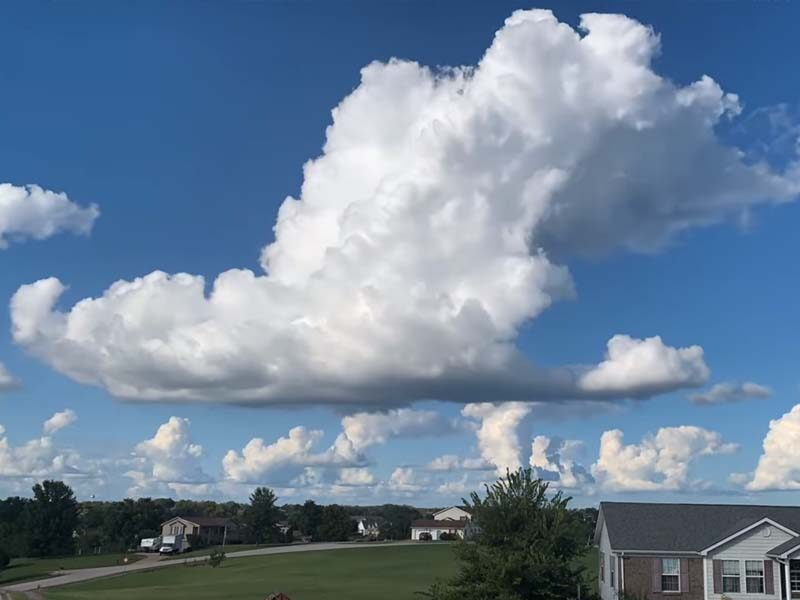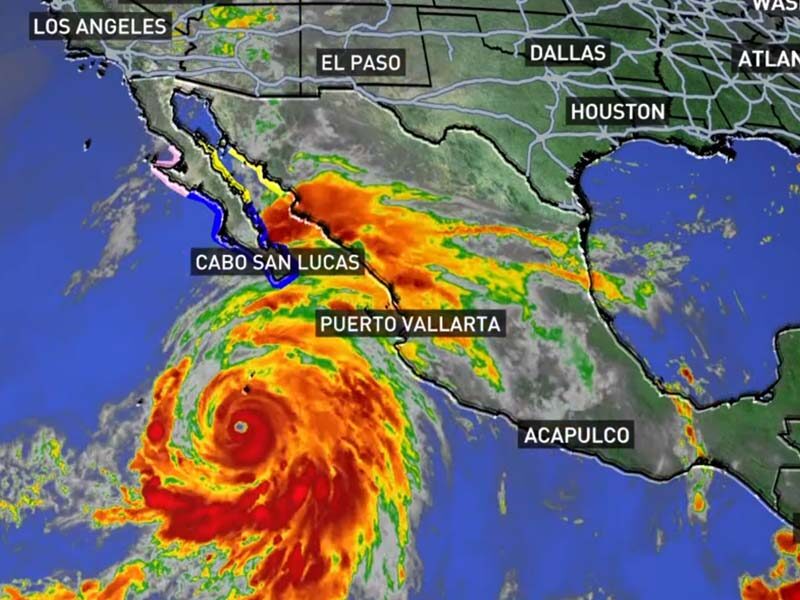As we all know, weather plays an essential role in our daily lives. It influences all aspects of our lives, from the clothes we wear to the activities we choose to participate in. One of the critical weather phenomena that can affect us is stationary fronts. In this article, we will delve into the concept of them, their formation, characteristics, and the type of weather they are associated with. We will also explore the impacts of stationary fronts on various aspects of our daily lives and the techniques used to predict and track them.
Understanding Stationary Fronts
Stationary fronts are formed when a cold front or a warm front stops moving and remains stationary for an extended period. They do not move in any particular direction. Instead, they persist in one location, usually for several days, due to the balance between two opposing air masses. While stationary fronts may seem less consequential than cold or warm ones, they can cause significant weather patterns that can have far-reaching impacts on our daily routines.
Definition and Formation
In meteorology, a stationary front is defined as a boundary between two air masses that remain in one place for an extended period. These form when a cold or a warm front comes to a halt. The former forms when a cold air mass pushes against a warm air mass, forcing it to rise. Similarly, the latter forms when a warm air mass moves over a colder air mass, forcing it to rise. When either of these stops moving, it becomes a stationary front.
The difference in temperatures between the two air masses causes the formation of a stationary front. Cold air masses are denser than warm air masses, making them push under the warm air mass at the boundary. This interaction causes the air to rise and cool, leading to cloud formation and precipitation.
Characteristics of Stationary Fronts
They have several unique characteristics that distinguish them from other types. They remain in one location, do not move in any particular direction, and have a contrasting temperature gradient across them. The air masses on either side of the stationary front have distinct properties regarding temperature, humidity, and atmospheric pressure. The temperature on the cold side is colder, while the temperature on the warm side is warmer.
As a result of the temperature gradient, they experience varying weather conditions on either side. The warm air mass side is characterized by humid and cloudy conditions, while the cold side has clear skies and drier air. The boundary between the two air masses is often marked by cloud formation and precipitation.
Differences between Stationary, Cold, and Warm Fronts
Cold ones occur when a cold air mass dethrones a warm air mass. Warm ones occur when a warm air mass overtakes a cold air mass. Stationary ones are when cold and warm air masses meet but remain stationary and do not move. The temperature changes are abrupt and significant, while those associated with warm ones are gradual and gentler. Stationary fronts lead to prolonged periods of precipitation, while the intensity of precipitation associated with cold and warm fronts tends to be higher but shorter-lived.
One important aspect of stationary fronts is their impact on air quality. When it is in place, the air on the cold side tends to be drier and cleaner, while the air on the warm side of the front can be more humid and polluted. This is because the stationary front acts as a barrier, preventing the mixing of air masses on either side. As a result, pollutants can become trapped on the warm side, leading to poor air quality.
Another factor that can be affected is agriculture. When a stationary front is present, the weather conditions on either side can vary significantly. This can impact crop yields and the growth of plants. For example, if a stationary front is in place and the warm side experiences prolonged periods of rain, crops on the cold side may suffer from drought. Understanding the location and movement is crucial for farmers and agricultural experts to make informed decisions about planting and harvesting crops.
Finally, they can also impact transportation. When a stationary front is in place, the weather conditions on either side can be vastly different. This can lead to hazardous driving conditions, especially if there is precipitation on one side and clear skies on the other. Additionally, airports may experience flight delays or cancellations due to the unpredictable weather conditions associated with stationary fronts.
Conclusion
In conclusion, stationary fronts may seem less consequential than cold or warm ones, but they can cause significant weather patterns that can have far-reaching impacts on our daily routines. Understanding their characteristics and formation is crucial for predicting weather patterns, assessing air quality, and making informed decisions about agriculture and transportation. By studying stationary fronts, we can better prepare for the weather conditions that they bring and mitigate their potential impacts.
Weather Patterns Associated with Stationary Fronts
Stationary fronts are known to cause an array of weather patterns, varying from precipitation to temperature changes. Understanding these patterns is crucial for predicting and preparing for severe weather conditions.
Cloud Formation and Precipitation
As mentioned earlier, stationary fronts form along the boundary of two contrasting air masses. The rising and cooling of the air over the boundary lead to the formation of clouds. These clouds can be low-lying stratus clouds or towering cumulonimbus clouds, depending on the intensity of the rising air mass. If the air mass rises rapidly, it can lead to thunderstorms and lightning.
Depending on the temperature and humidity levels, precipitation can occur in the form of rain, sleet, hail, or snow. Usually, stationary fronts cause prolonged periods of rainfall, sometimes leading to flash flooding in low-lying areas. In some cases, the precipitation can be so heavy that it leads to landslides and mudslides, causing significant damage to infrastructure and property.
Temperature Changes
Temperature changes occur on both sides of the stationary front. The air mass on the cold side is cooler, while that on the warm side is warmer. The gradient between the two sides causes temperature changes, leading to fluctuations in temperature. These fluctuations can be sudden and drastic, leading to severe weather conditions such as tornadoes or thunderstorms.
In some instances, the temperature changes can be so extreme that they lead to a phenomenon called a “temperature inversion.” This phenomenon occurs when the temperature of the air near the ground is cooler than the temperature of the air above it. This inversion can trap pollutants near the ground, leading to poor air quality and respiratory problems.
Wind Patterns
The position of the stationary front can lead to disturbances in the wind patterns. The difference in atmospheric pressure on either side of the boundary can cause the wind to blow parallel to the front. This effect leads to a weather phenomenon known as the “jet streak,” characterized by strong winds blowing from west to east, alternating with calm winds. This pattern can cause damage to structures and vegetation in its path.
In addition to the jet streak, stationary fronts can also cause gusty winds and downdrafts. These winds can be strong enough to knock down trees and power lines, causing widespread power outages and property damage.
Fog and Reduced Visibility
The moist warm air mass on the warm side of the stationary front easily condenses, leading to fog and reduced visibility. Foggy conditions can persist for several days, sometimes leading to flight cancellations and road closures. In addition to reducing visibility, fog can also make roads and sidewalks slippery, leading to an increased risk of accidents.
It is important to note that while stationary fronts can cause severe weather conditions, they can also bring much-needed precipitation to drought-stricken areas. Farmers and ranchers rely on stationary fronts to bring rain to their crops and pastures, helping to sustain their livelihoods.
Impacts of Stationary Fronts on Daily Life
Stationary fronts can have significant impacts on various aspects of our daily lives, including agriculture, transportation, outdoor activities, and emergency preparedness and response.
Effects on Agriculture
Stationary fronts can cause prolonged periods of rainfall, which can have a considerable impact on crops. Flooding can destroy crops and contaminate the soil, leading to significant economic losses for farmers.
Transportation Challenges
Stationary fronts can cause difficulties in transportation. Heavy rainfall can make roads impassable, leading to traffic snarl-ups and accidents. Foggy conditions can also lead to flight cancellations or delays, causing inconvenience to passengers.
Outdoor Activities and Sports
Stationary fronts can cause outdoor activities and sports to be canceled or postponed. Prolonged rainfall can make playgrounds and fields unusable, denying children and adults the chance to enjoy outdoor activities such as picnics, hiking, and bike riding.
Emergency Preparedness and Response
Due to the potential for severe weather, emergency preparedness, and response agencies make special preparations when stationary fronts are predicted to occur. Safety measures such as evacuation or emergency shelters may be put in place to ensure the safety of the public during severe weather conditions.
Predicting and Tracking Stationary Fronts
Several tools and techniques are used to track and predict stationary fronts. These include meteorological equipment and weather forecasting models.
Meteorological Tools and Techniques
Meteorological equipment such as satellites, radars, and automated weather stations can detect the presence of a stationary front. By measuring temperature, humidity, and atmospheric pressure, meteorologists can predict the weather patterns associated accurately.
Weather Forecasting Models
Weather forecasting models use a combination of scientific theories, mathematical algorithms, and data analysis techniques to forecast weather patterns accurately. These models consider data from multiple sources such as satellites, radar, and meteorological sensors to provide detailed and timely information about stationary fronts.
Role of Satellites and Radar
Satellites and radar plays a critical role in tracking and predicting the movement of stationary fronts. Satellites provide real-time images of weather patterns, while radars detect precipitation and provide information on the intensity and location of storms. These tools help in predicting where the stationary front is headed and the type of weather patterns it is likely to cause.
Conclusion
Stationary fronts may seem inconsequential, but they can cause significant weather patterns that can have far-reaching impacts on our daily routines. They are formed when a cold or a warm front comes to a halt, leading to a balance between two opposing air masses. They are characterized by prolonged periods of precipitation, temperature changes, wind patterns, and fog. They can have significant impacts on agriculture, transportation, outdoor activities, and emergency preparedness and response. The use of meteorological equipment and weather forecasting models plays a vital role in predicting and tracking stationary fronts.


